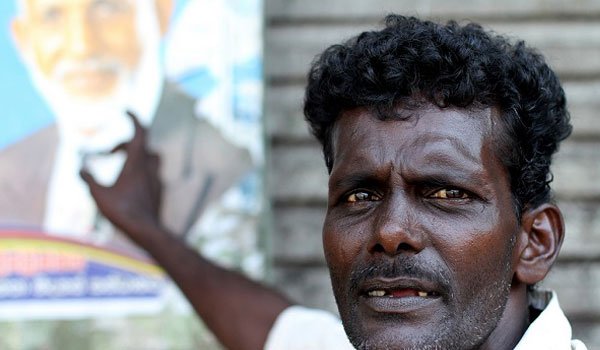Sri Lanka's civil war ended in May 2009, when the military under President Mahinda Rajapaksa crushed Tamil separatist forces in a series of bloody offensives in the country's north east. In January last year, Sri Lankans replaced Rajapaksa, narrowly voting in his former ally and minister Sirisena, who promised to curb corruption, reform the constitution and foster reconciliation. That election success was reinforced in parliamentary elections in August, and the appointment of a new Prime Minister, Ranil Wickremesinghe, heading a tricky coalition of the nation's two major parties.
Rajapaksa's 10-year rule had become increasingly authoritarian. The new Government is moving carefully to investigate corruption allegations against Rajapaksa, his brothers (including a former minister of economic development and a former secretary of the ministry of defence), and a son suspected of corrupt activity related to allocation of cricket broadcasting rights. Rajapaksa is still in Parliament with a loyal, if diminished, following (his image remains defiantly plastered on roadsides in his rural heartlands), and so has the potential to destabilise the government.
Reconciliation
Almost seven years on, the military's handling of the final months of the war is still contested. Both sides claim breaches of human rights, especially in relation to civilians. Rajapaksa resisted enquiry into these dark aspects of the war. Sirisena has promised to have the allegations examined and has made other conciliatory gestures.
Jaffna, the Tamil 'capital' in the far north, is recovering economically, but unsurprisingly still looks and feels very different to the south. The population halved during the war, with those who could fleeing to relative safety in the capital Colombo (where they now account for some 40% of the city's population), or overseas. Few who left are returning. Of the 100,000 plus refugees in India, only 429 returned in 2015. Jaffna is well served by new road and rail links, and investment is flowing in. But reconciliation has some way to go.
Tamil grievances include a large number of 'missing persons' and their demands extend to the resettlement of tens of thousands of displaced people, the release of political prisoners and a return of confiscated land.
The Military
The army has grown from some 7000 in the early the 1970s to more than 200,000 today. Amazingly, despite a botched coup plot in the early 1960s, the military has remained either in the barracks or on the battlefield. Sensibly, soldiers are not being demobbed hastily but rather by attrition. Some are being retrained for civil life, contributing to the restoration of colonial buildings in Colombo and managing civil-war monuments, a new if contentious tourism product.
The military, almost entirely Sinhalese, still occupies large tracts of land confiscated for military purposes. Some areas are being returned, some are still to be cleared of landmines (a process assisted by Australia), while some will remain in military hands indefinitely. Military checkpoints have gone from the main roads but a massive military presence remains in the north.
Religion
Sinhala nationalism has been accompanied by a resurgent Buddhist clergy. Massive Buddha statues now dot the landscape, reflecting the generosity of the faithful, but also an assertion of Sinhala cultural dominance.
And another issue has arisen. With the flight of many Tamils and a high population growth among the Muslim community (of ancient Arab and more recent Malay origin), Muslims probably now outnumber Sri Lanka Tamils. While radical Islam has not found very fertile ground in Sri Lanka, over 30 jihadists are reported to have been recruited to date. Sirisena's critics, including prominent Buddhist leaders, are raising the demographic alarm. Sirisena owes his success in the polls to Tamil (mainly Hindu) and Muslim voters, but to maintain his parliamentary majority he must maintain the support of a good proportion of the Sinhalese Buddhist population.
The Economy
DFAT assesses that Sri Lanka has experienced strong economic growth for more than a decade, has reduced its rates of extreme poverty from 28.8% of the population in 1995 to 6.7% in 2013, and is now 'approaching upper-middle income status'.
Former President Rajapaksa did much to re-boot the economy with massive investment in infrastructure, much of it from China. However, corruption flourished and common sense economic policies were trumped by self-aggrandising projects. An 'international' airport was built in the President's electorate in the south of the island. Three years after its completion it is attracting few flights.
If Sirisena can curb corruption, maintain investment flows and harness Sri Lanka's large and talented workforce (rather than leaking many of the best to the Gulf and elsewhere), the economy should surge. Colombo is booming, including ever more high rise apartments which are luring back some wealthier émigrés. And the tourist industry has bounced back, including many émigré Sri Lankans eager to reconnect. It is high season now and accommodation is hard to find.
Regional Security
Rajapaksa's reliance on China for arms and investment gave Beijing the opportunity develop strategically important deep water ports, close to its strategic rival India. Sirisena has flagged that he will seek to retain the economic links but moderate the strategic dependence. In parallel, the new Government seeks to mend relations with India (more than 1000 Indian soldiers died in its ill-fated 1987-90 intervention in the civil war).
The US has been typically nimble on re-engaging. To mark the anniversary of the Sirisena Presidency, US State Department Counselor Thomas Shannon was succinct: the US and Sri Lanka 'share an interest in safeguarding global maritime commerce in the vital sea lanes of the Indian Ocean...' More broadly Sri Lanka has mended fences with the international community, striking a deal with the UN Human Rights Commission on a mechanism to investigate charges of human rights abuse.
Australia has long shared excellent people-to-people relations with Sri Lanka. But when other countries are increasing support to Sri Lanka, Australia's aid is shrinking. Our strategic interests are no less than those of the US, and arguably more. Australia should be consolidating the relationship to our mutual interest, not least in maritime security. We should also leverage our goodwill to support national reconciliation, and grow our defence and intelligence cooperation. And we have every interest in Sri Lanka's growing economy, its increasingly busy ports and its attractions as a regional economic hub with free trade agreements with India and Pakistan.
The prospects are good and will be reinforced by the recent appointments of new envoys: in Canberra, High Commissioner Skandakumar has brought a strong background in business, and being from the Tamil community, reflects the conciliatory thinking of the new government; and in Colombo, a career diplomat Bryce Hutchesson arrives with very strong credentials in Asian regional affairs and in international security matters.
Those in the Sri Lankan community in Australia are among the many hoping to see a successful reform program unfold in coming years
Photo courtesy of Flickr user Adam Cohn
(lowyinterpreter.org)
By John Tilemann






